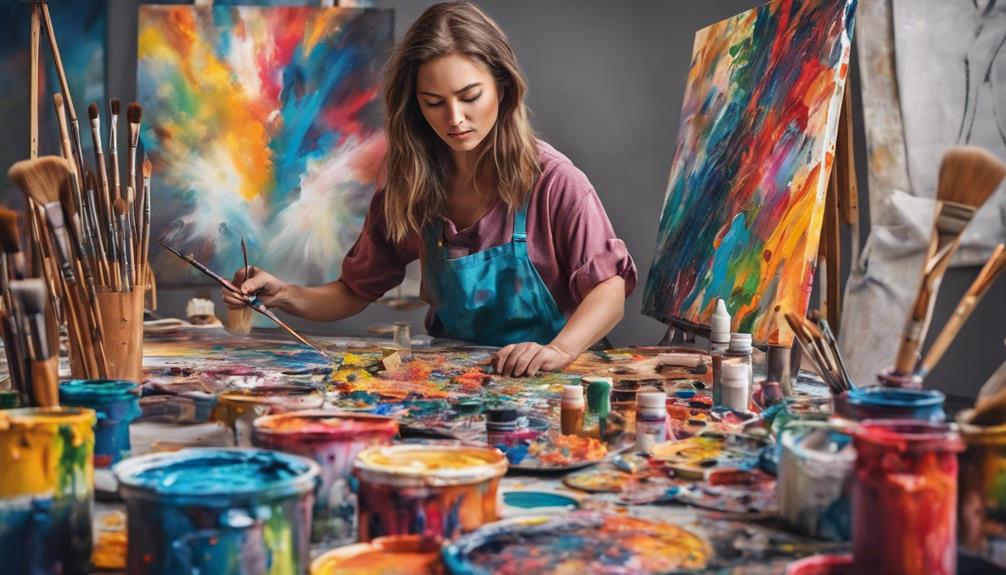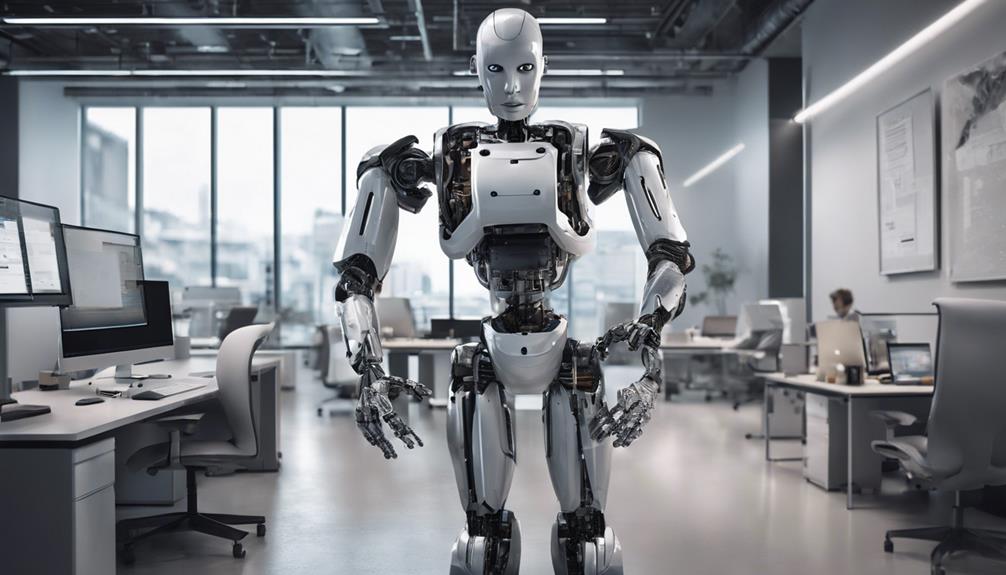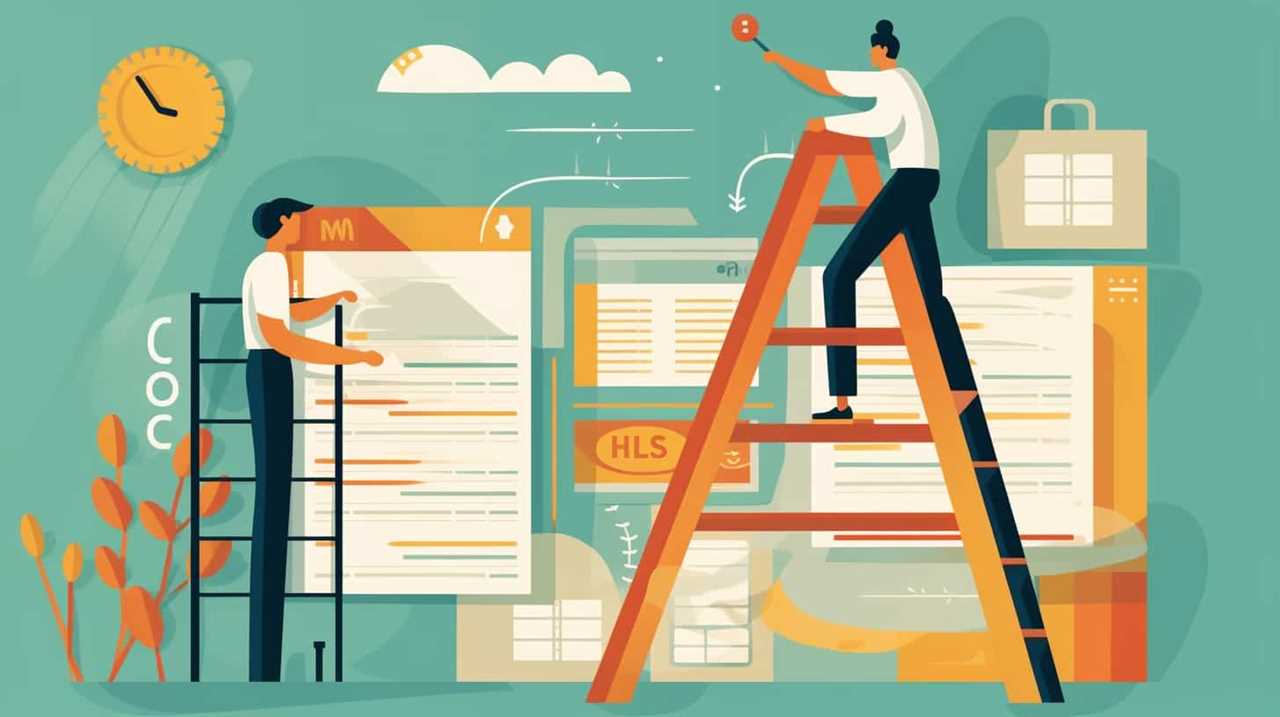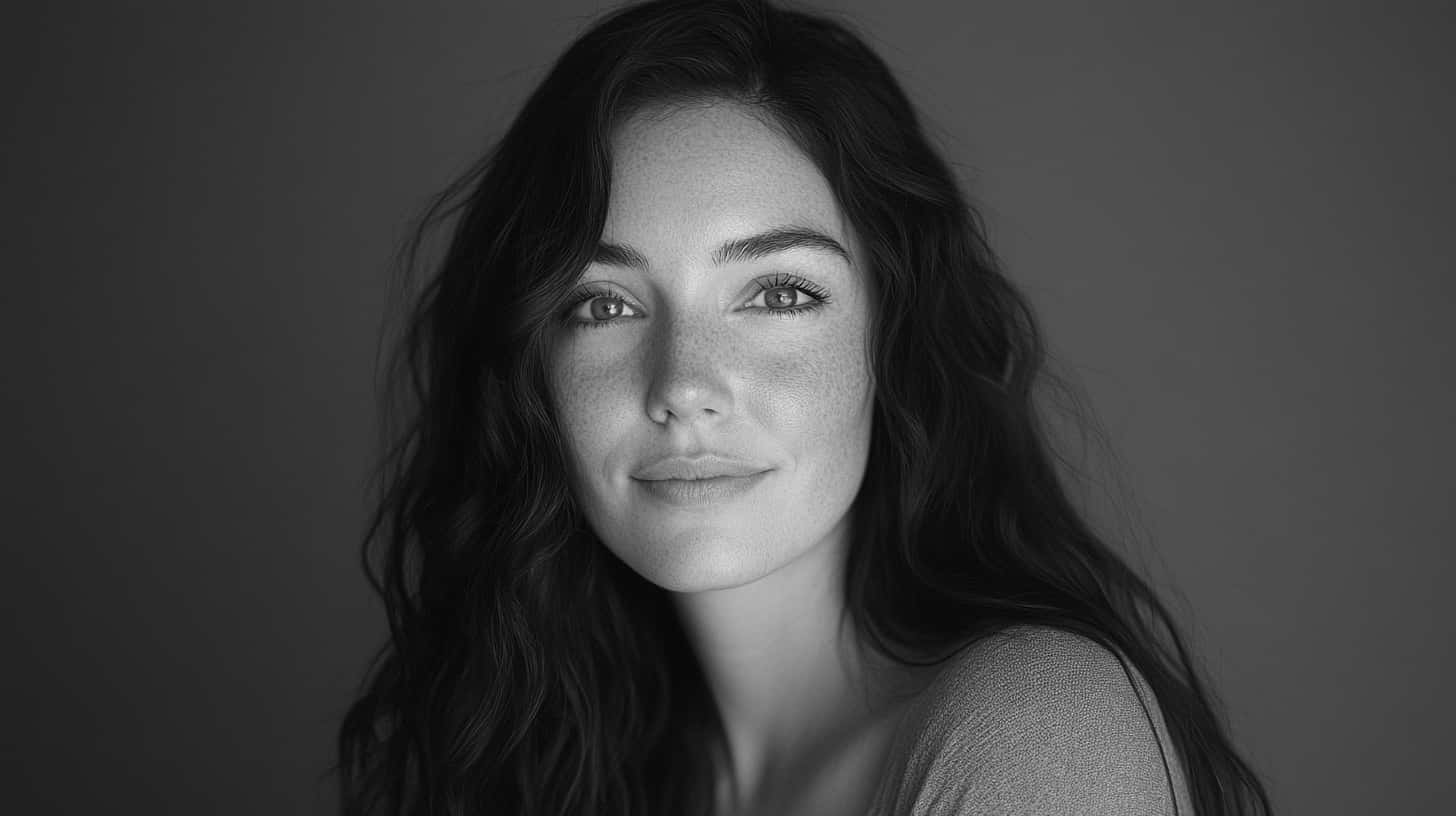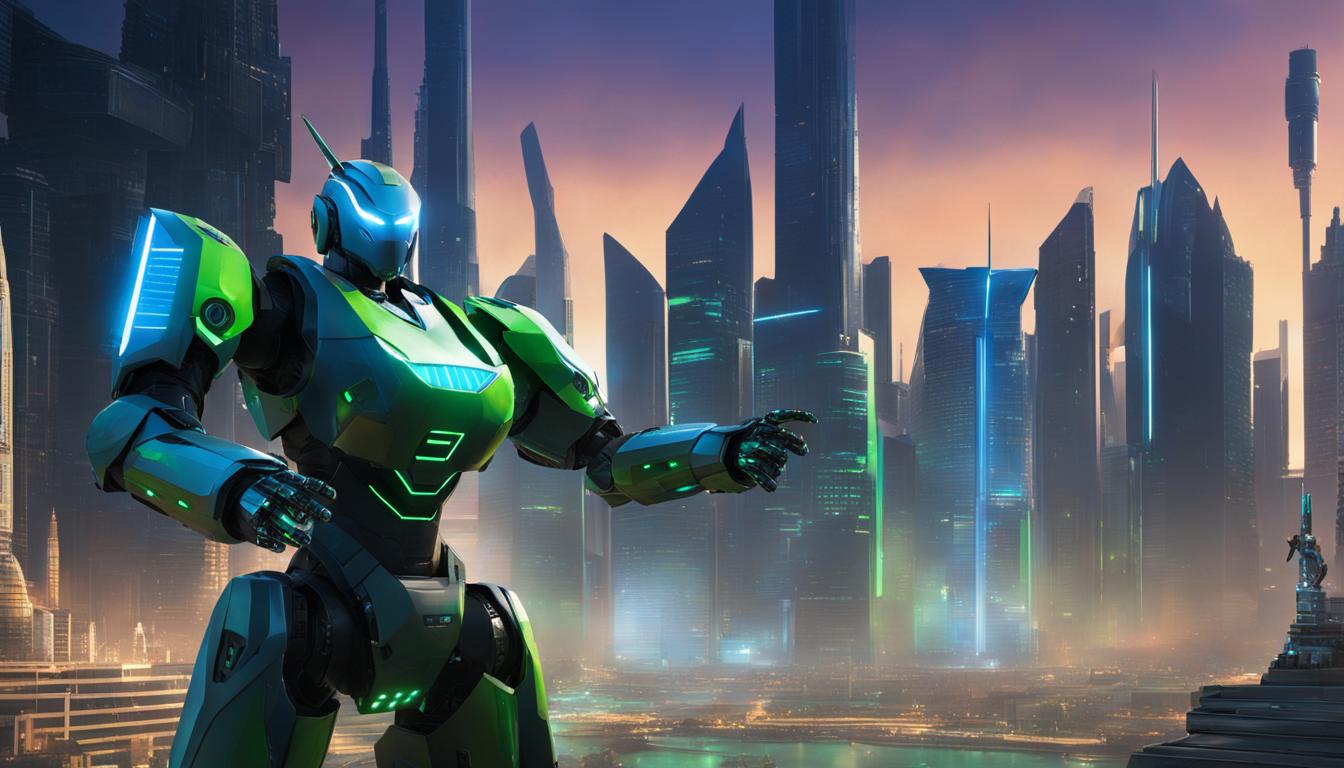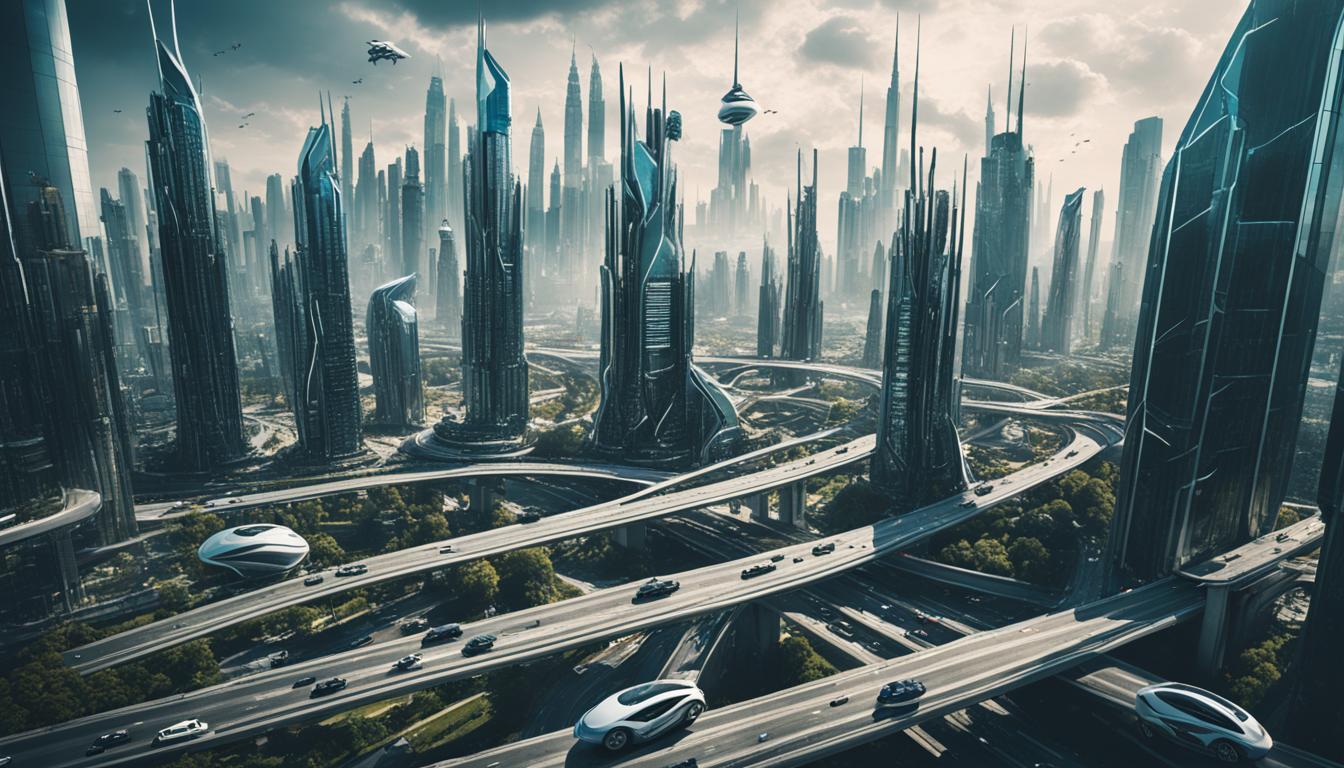In the realm of creative fields, the debate surrounding whether AI can replace human creativity is an intriguing subject. Despite advancements in technology, there remains a fundamental distinction between artificial intelligence and human creativity that goes beyond mere functionality.
While AI can streamline processes and offer suggestions, it is the intricacies of human emotion, intuition, and cultural depth that truly shape creative endeavors. Understanding the nuanced interplay between AI and human creators is essential in exploring the future landscape of creativity.
Key Takeaways
- Human creativity's emotional depth surpasses AI's capabilities.
- Authenticity in art stems from personal experiences, a realm AI cannot access.
- AI lacks the human touch of cultural richness and diverse perspectives.
- The essence of creativity lies in human emotions and ingenuity, irreplaceable by AI.
Unique Human Creativity Qualities
Human creativity, with its intricate tapestry woven from emotions, personal experiences, and cultural influences, stands as a testament to the depth of human expression and innovation. The boundaries of human creativity are not easily replaceable by AI due to the unique qualities inherent in human creative processes. Emotional intelligence, derived from personal narratives and subjective experiences, plays a pivotal role in shaping human creativity. Unlike AI, humans possess the ability to infuse their creations with genuine emotions and authenticity, making their work resonate on a profound level with audiences. Human creativity transcends mere replication of patterns or algorithms; it is deeply intertwined with individual inspiration and the human experience.
The subjective nature of human creativity allows for a diverse range of expressions that reflect the complexity of human emotions and thought processes. This authenticity and depth stem from the intricate interplay between personal experiences, cultural backgrounds, and emotional connections. AI may excel in replicating certain patterns, but the essence of human creativity lies in its ability to capture the essence of what it means to be human, making it irreplaceable in creative fields.
AI Limitations in Creative Expression

The disparity between AI and human creativity becomes pronounced when considering the limitations AI faces in expressing creativity due to its lack of emotional intelligence and personal experiences. AI lacks the nuanced understanding of emotions and life experiences that humans possess, hindering its ability to infuse creations with genuine sentiment and depth.
Creative expression often involves conveying subjective perspectives, unique viewpoints, abstract concepts, and complex emotions – areas where AI struggles to emulate human capabilities effectively. Furthermore, human creativity is deeply intertwined with cultural backgrounds and individual experiences, elements that are challenging for AI to replicate authentically.
The artificial nature of AI inherently limits its capacity to generate truly original content that resonates on a deeply human level. These constraints highlight the intrinsic value of human creativity, rooted in emotional intelligence, personal experiences, and cultural richness, aspects that remain essential in creative fields despite advancements in artificial intelligence.
Human-Centric Creative Capabilities
Rooted in the intricate interplay of emotions, personal experiences, and cultural backgrounds, creative capabilities in the human realm stand as a testament to the depth and authenticity inherent in artistic expression. Human creativity remains a powerful force due to its genuine connection to emotions and personal experiences, which shape the lens through which individuals perceive the world. This connection to the self and one's unique perspective allows for the generation of new ideas and problem-solving approaches that are deeply rooted in authenticity.
- Emotions drive human creativity, influencing the depth and authenticity of creative works.
- Personal experiences shape unique perspectives, leading to original content creation.
- Human creativity involves problem-solving through the lens of subjective experiences.
- The authenticity in artistic expression stems from the genuine emotions woven into creative works, setting them apart from the artificial nature of AI-generated content.
The Value of Human Ingenuity

In exploring the significance of human ingenuity within creative realms, it becomes evident that this intrinsic quality serves as a cornerstone for innovation and authentic expression in artistic endeavors. Human creativity is likely to remain a fundamental force in the future of AI, as it encompasses emotional intelligence, the human experience, and the ability to push the boundaries of what is possible. AI algorithms may assist and augment human creativity, but they cannot replace the unique spark that human creatives bring to their work. The human creative process draws inspiration from a multitude of sources, reflecting personal experiences and diverse perspectives that shape cultural evolution. By valuing human ingenuity, we acknowledge its power to challenge norms, inspire change, and infuse creativity with a depth that resonates profoundly with society.
| Key Aspects | Examples | Impact | Significance |
|---|---|---|---|
| Emotional Intelligence | Expressing complex emotions through art | Enhances connection with the audience | Vital for creating resonant works |
| Human Experience | Drawing from personal stories and struggles | Adds authenticity to creative projects | Offers a unique perspective |
| Pushing the Boundaries | Experimenting with unconventional ideas | Drives innovation in creative fields | Encourages growth and evolution |
Collaborative Potential of AI
How can AI's collaborative potential revolutionize the landscape of creativity and innovation in various artistic disciplines?
AI technology offers a wealth of opportunities for collaboration with human intelligence, enhancing the creative process and leading to groundbreaking outcomes. Here are four ways in which AI's collaborative potential can transform the creative fields:
- Generating New Ideas: AI's data analysis capabilities can sift through vast amounts of information to uncover patterns and suggest innovative solutions, sparking new ideas for human creators.
- Enhancing the Creative Process: By handling repetitive tasks and providing automation, AI frees up human creators to focus on higher-level creative aspects, accelerating the creative process.
- Exploring Creative Possibilities: The partnership between AI's computational power and human creativity allows for the exploration of new and uncharted creative territories, pushing boundaries and fostering experimentation.
- Facilitating Efficiency and Accuracy: Collaborating with AI promotes efficiency, accuracy, and precision in creative endeavors, ensuring that the final outcomes meet the highest standards of quality.
Frequently Asked Questions
Will Artificial Intelligence Replace Creatives?
Artificial intelligence may augment, but not fully replace, creatives in various fields. While AI excels in certain tasks, the intricate blend of human emotions, experiences, and cultural nuances remains a stronghold of human creativity.
Why Will AI Not Replace Artists?
The essence of artistic creation, rooted in human experiences, emotions, and intuition, remains a domain where AI cannot supplant artists. The innate creativity, personal touch, and boundary-pushing nature of human artistry defy replication.
Can Artificial Intelligence Replace Humans in Artistic Jobs?
While artificial intelligence continues to advance in various fields, replacing humans in artistic jobs remains a complex challenge. The intricate nuances of artistry, rooted in personal expression and cultural influences, are deeply tied to human creativity, emotions, and unique perspectives.
Why Should We Not Replace Humans With Ai?
Replacing humans with AI disregards the essence of creativity rooted in human emotions and experiences. AI's role is to complement, not supplant, human creativity, fostering innovation and pushing boundaries. The synergy between human and AI elevates creative endeavors.
Conclusion
In conclusion, while AI may offer valuable tools and insights for creative fields, it cannot replace the unique qualities of human creativity. The limitations of AI in emotional intelligence and cultural understanding highlight the irreplaceable value of human ingenuity in creative endeavors.
By embracing the collaborative potential of AI, humans can continue to push the boundaries of innovation and unlock new possibilities in creative expression.
Ava combines her extensive experience in the press industry with a profound understanding of artificial intelligence to deliver news stories that are not only timely but also deeply informed by the technological undercurrents shaping our world. Her keen eye for the societal impacts of AI innovations enables Press Report to provide nuanced coverage of technology-related developments, highlighting their broader implications for readers.
